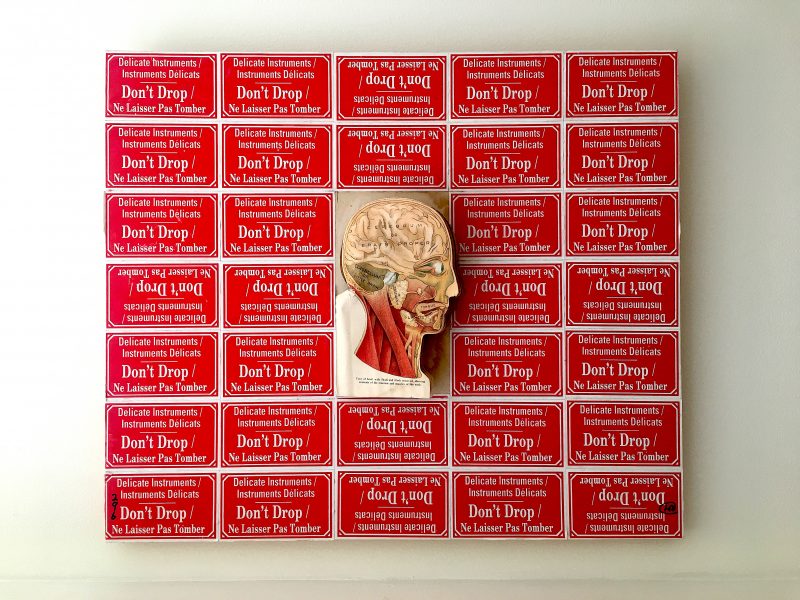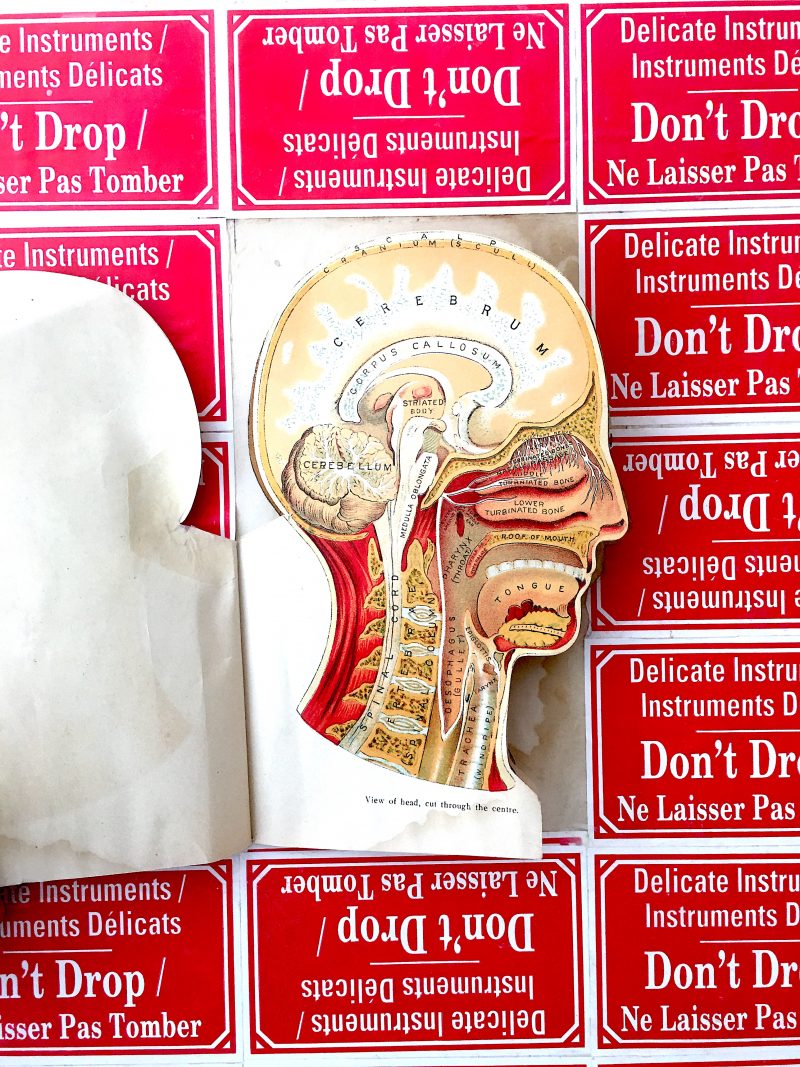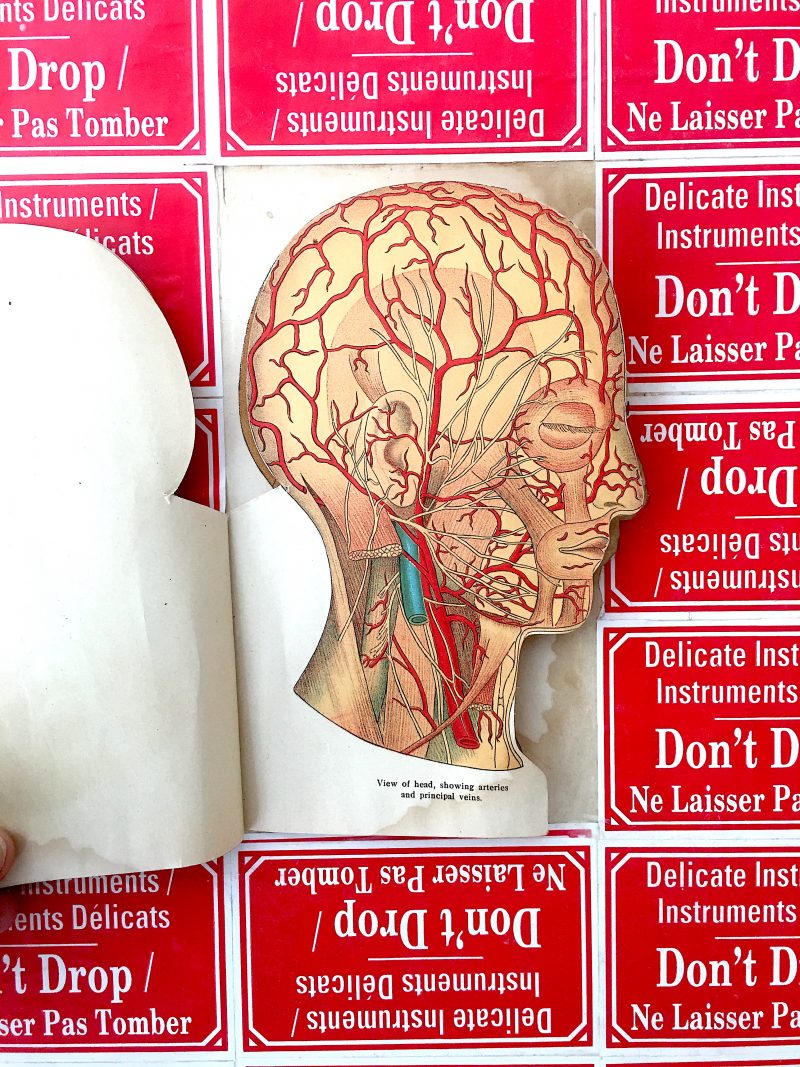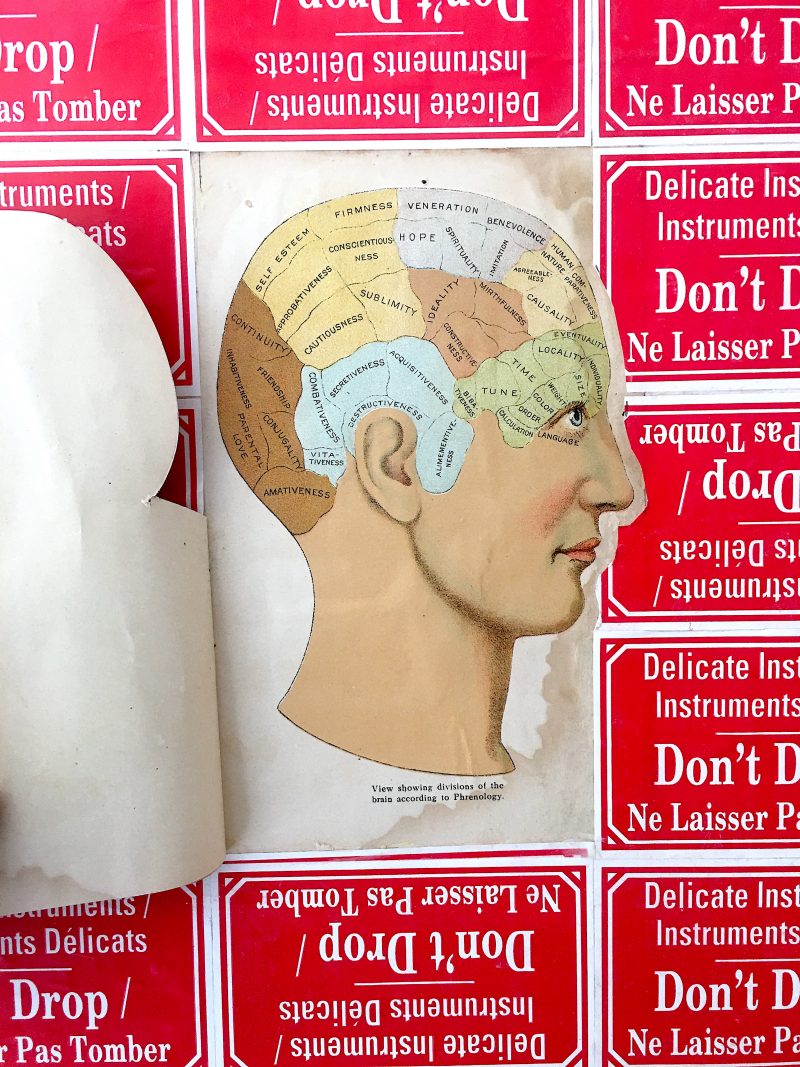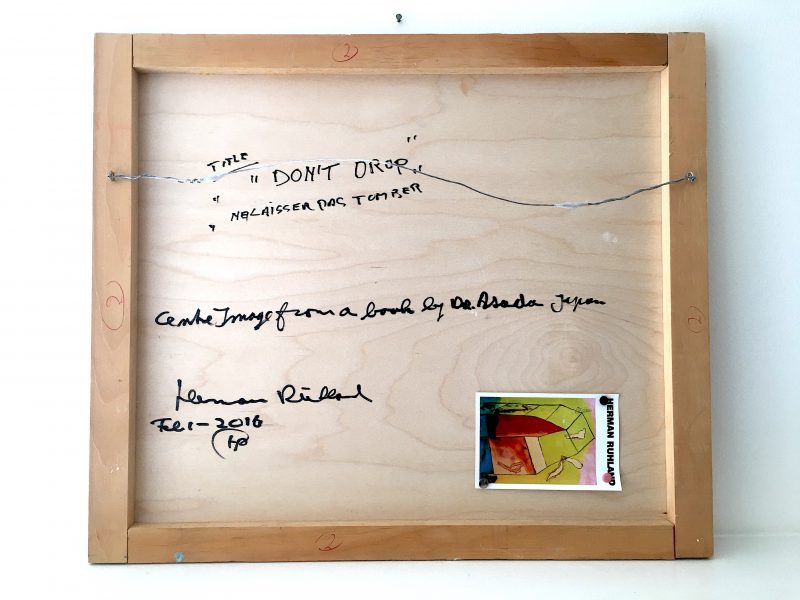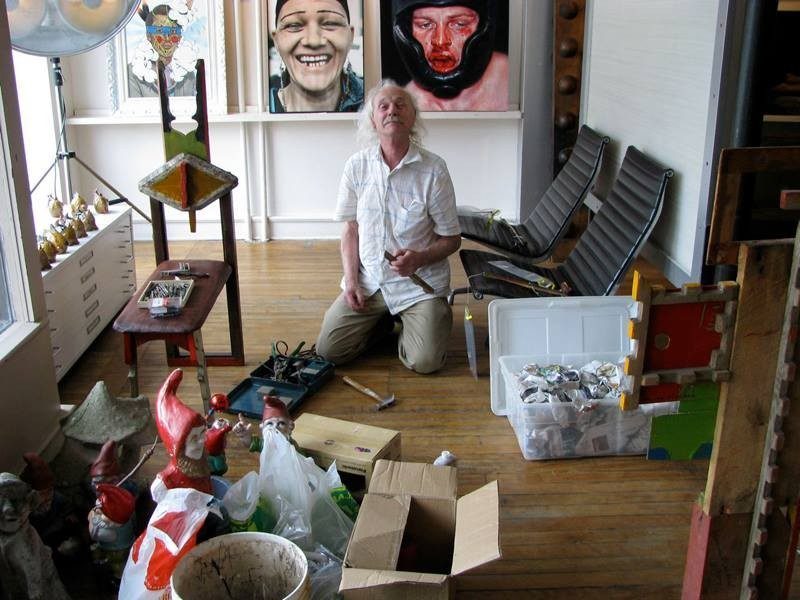SOLD. Herman Ruhland Outsider Art Medical & Found Imagery Collage Wood
Artist: Herman Ruhland
Title: Don’t Drop / Ne laissez pas tomber, 2016
Medium: Paper on board
Dimensions: 21 1/4” x 25” (h x w)
Signature: Initialed and dated on recto; signed and dated on verso
Price: $300
SOLD.
ARTIST STATEMENT:
To me art is about freedom, free from the restrains of traditional use of materials,
Free of academic dictations how to do art.
Expressing myself from the heart guided by an desire to understand myself.
Let the subconscious do some work
“ From the heart is the only art”
Herman was born and educated in the Netherlands.
Came to Canada in 1959 always interested in art and design, started a garden design company in 1961 and studied art at the Ottawa school of art for many years.
At present time does painting and sculpturing using different media and found objects.
Lives on a farm near Ottawa.
Statement from Past Solo Exhibit:
Herman Ruhland’s works provide the chance to read liberations of form and memories within material. On July 26, LPM Gallery will showcase the recent works of Herman Ruhland, a Dutch-born sculptor and painter who has been a friend to the gallery for many years. Ruhland moved to Canada in 1959, and with a background in horticulture, began designing Japanese inspired gardens. Currently Ruhland lives on a farm outside of Ottawa. His artistic practice has developed on the reworking and assembling of found objects and seemingly disparate materials.
Ruhland’s sculpture works press against the imagined limit of what is figure or what constitutes as figurative. In encountering cultural signifiers, natural forms, bodies and parts together and by non-traditional means, viewers must reach within themselves and sift through their personal memories to create meaning.
Using traditionally undervalued materials by the academy such wood, scrap metal and discarded or forgotten forms, the intention of form, and meanings within models are turned on their head and reversed. Ruhland’s process is not simply a resistance to dominant, fashionable materials of art-marking, rather it is the acting out of a freedom of form. In such a way, the sculptures brush against an archetype of modernist assemblage, but with a deeply personal, contemporaneous sensibility.
Ruhland’s sculptures highlight the phenomenological aspect of reading three-dimensional forms in that we are actually looking at ourselves, and searching through our own embodiment of the viewing experience. In a double bind of variance and grace, hard, sharpened edges, manifest as welcoming surfaces. We feel the working of human hands. The dignity of Ruhalnd’s work rests in a felt intimacy of labor.
As a selection of primarily smaller-scaled, intimate works, this exhibition is a celebration of Herman’s fruitful career, and by extension stands as an ode to his lifelong partners, collaborators, and his wife Margaret.
– Adam Barbu, Gallery Assistant & Writer.
What is Outsider Art:
Outsider Art is art by self-taught or naïve art makers. Typically, those labeled as outsider artists have little or no contact with the mainstream art world or art institutions. In many cases, their work is discovered only after their deaths. Often, outsider art illustrates extreme mental states, unconventional ideas, or elaborate fantasy worlds.
The term outsider art was coined by art critic Roger Cardinal in 1972 as an English synonym for art brut (French: [aʁ bʁyt], “raw art” or “rough art”), a label created by French artistJean Dubuffet to describe art created outside the boundaries of official culture; Dubuffet focused particularly on art by those on the outside of the established art scene, using as examples psychiatric hospital patients and children.
Outsider art has emerged as a successful art marketing category; an annual Outsider Art Fair has taken place in New York since 1993, and there are at least two regularly published journals dedicated to the subject. The term is sometimes misapplied as a catch-all marketing label for art created by people who are outside the mainstream “art world” or “art gallery system”, regardless of their circumstances or the content of their work. A more specific term, “outsider music“, was later adapted for musicians.
